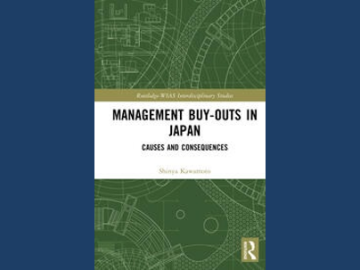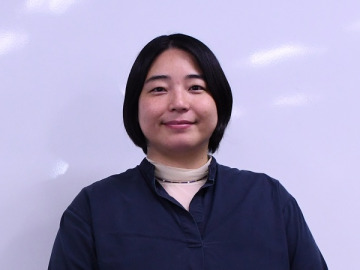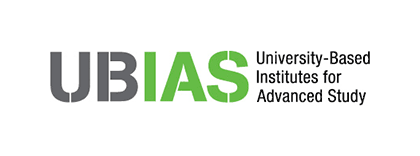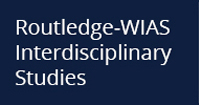
- Ryo Takahashi, Assistant Professor (November, 2015)
Deforestation by Coffee Cultivation
The Forest Coffee Certification System aims to encourage environmental friendliness in the production process. I have been studying its impact on forest conservation in interdisciplinary fields involving international cooperation, economics, and spatial information science. I have also been examining the determinants of purchasing behavior for certified coffee in Japan.
Even in 2016, the problem of deforestation accelerated by the establishment of modern coffee farms remains unsolved. Coffee trees are traditionally shade-tolerant trees that grow in shady areas of forests (Photo 1), and they once grew under other trees in luxuriant forests. They were repeatedly bred to increase yield, and now they are cultivated in sunny places where forests have been cleared. The breeding approximately tripled the coffee yield.

Photo 1: The tree the man on the right is touching is a coffee tree grown in a forest (shade-tolerant tree).
A variety close to the foundation seed can be cultivated in luxuriant mossy forests. Ethiopia, which I study, wishes to develop the coffee industry as a national policy, and thus the Agency of Agriculture is distributing modern varieties of coffee (sun tree) to people at giveaway prices. The people clear forests and convert the forest areas into modern coffee farms because there is no land to plant the distributed seedlings (farmland). On the other hand, the Agency of Forestry is struggling to stop deforestation. (Courtesy of Assistant Professor Ryo Takahashi)
To stop environmental destruction due to agricultural land conversion, a non-governmental organization called the Rainforest Alliance established a system to certify coffee beans harvested through traditional farming methods. This certified coffee is called Forest Coffee, and its product packages bear the certification mark (Fig. 1). The certification standard is rigorous and the certified farms are audited annually. If they cannot meet the standard, they will lose the certification.
In 2010, trading companies paid almost double the price to buy the certified coffee; therefore, achieving the certification helps the coffee farmers earn more.

Fig. 1: The mark that the Rainforest Alliance certified coffee bears.
The trademark of the Rainforest Alliance uses a frog, an animal that is sensitive to environmental changes. In order to be certified by the Rainforest Alliance, applicants must meet standards for soil conservation and reduced use of chemical substances as well as worker welfare. Coffees bearing the certified mark are sold in Tokaido Shinkansen trains. Besides coffee, products such as tea, chocolate, cut flowers, and furniture are also covered by the certification system and all certified products bear the certification mark.
Does the Coffee Certification System Protect or Destroy Forests?
Some researchers say that the coffee certification system actually destroys forests. According to them, the certified coffee sells at higher prices, and so farmers think that growing more makes more money. Consequently, they cut off more trees to plant coffee in forests. Although they do not clear the forests completely, they cut large trees and forest quality decreases.
In response to this, I decided to study whether the certification system is effective in conserving forests. The region I studied is the Belete Gera forest in Ethiopia.
I first investigated the quality of the forest using a spatial information sciences approach. For the analysis, I used the satellite images taken by Landsat. More specifically, I used the satellite images to calculate the wavelength generated when green leaves of plants reflected sunlight. Then, based on the obtained values, I identified the forest areas and determined the quality of the forests from the biomass quantity.
Although forest areas can be identified by means of satellite images, it is not possible to identify the areas in the forest where coffee is grown with satellite images or aerial photos. I then used GPS to acquire location information of the areas where coffee was grown (Photo 2).

Photo 2: I used GPS to investigate and identify where coffee farms are located on the satellite images. (Photo data provided by Assistant Professor Ryo Takahashi)
The results were as shown in Table 1. The results indicate that over the period from 2005 to 2010, the biomass quantity of the certified coffee farms has slightly increased whereas that of the uncertified coffee farms has decreased. The study reveals that the certification system is effective for forest conservation.

Table 1: Analysis through the propensity score matching (PSM) approach in development economics.
The comparison of certified coffee farms with uncertified coffee farms in similar environments reveals that whether a farm is certified by the Rainforest Alliance made a difference in forest quality over the period from 2005 to 2010. (Courtesy of Assistant Professor Ryo Takahashi)
To Let People Select Coffee Bearing the Frog Mark
To maintain the certification system sustainably, it is necessary for the certified products to be consumed widely around the world. There are other coffee certification systems besides Forest Coffee aimed at environmental conservation, including the Fair Trade Certification and Organic Certification. In Japan, such certified coffee is consumed less, and the growth in consumption is lower than in the U.S. and Europe (Fig. 2).

Fig. 2: Change in certified coffee imports.
In the U.K., certified coffee is sold even in McDonald’s. Students have a large impact on consumption trends. Certified coffee was popularized in the U.K. because students requested that universities and colleges change all the coffee and tea sold in their schools to certified products. (Courtesy of Ryo Takahashi)
Why is certified coffee consumed less in Japan? I don’t think it’s because the Japanese are not well aware of international cooperation. Is it because they are not familiar with the system of certified coffee? I don’t think so. Results of research on buying factors for certified products, which was conducted at supermarkets in the U.S., shows that the visibility of the certification systems does not affect buying behavior at all. Impediments to the consumption of certified products in Japan have not been revealed demonstratively.
To this end, I conducted an experiment at Waseda University using an eye tracker to record lines of sight. In this experiment, only the labels of coffee products (Fig. 3) are displayed to the test subjects in order to verify which elements contribute to their decision-making, so as to identify any impediments to their purchase of certified products.

Fig. 3: Labels used in the experiment.
The labels are analyzed with an eye tracker that tracks which of the three designs the test subjects look at to select a coffee product. The design of the button for Forest Coffee is changed randomly to find the criteria for the test subjects to select the Forest Coffee and which design makes the test subjects more likely to do so. (Courtesy of Assistant Professor Ryo Takahashi)
However, this experiment was targeted only at the university students in the laboratory and thus it is unknown whether the obtained results can be applied in the real world. To make this point clear, I will conduct social experiments in collaboration with companies using automatic vending machines. By the way, Forest Coffee is sold in the paper cup vending machine on the first floor of Building No. 8 at Waseda University. I encourage everyone who’s interested to try it.
What Kind of International Cooperation Will Make the Whole World Happy?
The purpose of my research is not to protect the environment. I want to study ways to look for the kind of international cooperation that makes both developed and developing countries happy. I arrived at this idea through an experience I had in my high school days. When I was studying abroad at a high school in Utah in the U.S., the Sept. 11 terrorist attacks and the Afghanistan invasion occurred.
Recruiters from the Army, Navy, and Air Force came to the school to recruit students with the slogan “Let’s work together to protect world peace.” Not a few of my classmates had the idea that the U.S. should fight to maintain world peace. At that time, I had the vague idea that I could engage in international cooperation in a way other than war.
I think that people in developed countries should not force people in developing countries not to cut trees because it destroys the environment. I would like to seek an ideal way of international cooperation to make as many people as possible happy, such as creating a system that allows people in developing countries to choose not to cut trees of their own will.
Interview and Composition: Kaori Oishi
In cooperation with: Waseda University Graduate School of Political Science J-School










